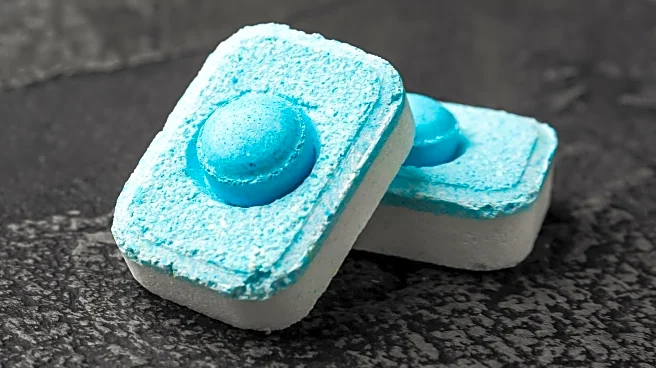What's Happening?
Sandoz has announced the launch of its generic iron sucrose injection in the United States, following approval by the FDA. This product is aimed at treating iron deficiency anemia, particularly in patients with chronic kidney disease (CKD). Iron deficiency anemia affects approximately five million people in the US, with CKD patients being at high risk. The intravenous iron sucrose is administered at dialysis centers nationwide, providing essential iron replacement to foster red blood cell production. Sandoz's launch expands its portfolio of high-quality injectable iron therapies, reinforcing its commitment to providing affordable medicines.
Why It's Important?
The introduction of Sandoz's iron sucrose injection is significant as it addresses a critical need for affordable iron therapy among CKD patients, a group that is particularly vulnerable to anemia. By expanding access to this treatment, Sandoz is potentially improving the quality of life for millions of Americans who suffer from iron deficiency anemia. This move also strengthens the US supply of injectable iron sucrose, ensuring that patients and healthcare providers have reliable access to necessary treatments. The launch reflects Sandoz's broader strategy to pioneer access to affordable medicines, which can lead to substantial healthcare savings and social impact.
What's Next?
Sandoz's launch of iron sucrose injection sets the stage for future expansions in its portfolio of injectable iron therapies. The company may continue to develop and introduce more affordable treatment options for chronic conditions, further solidifying its position as a leader in the generic pharmaceuticals market. Healthcare providers and patients can expect increased availability and potentially more competitive pricing for iron therapies, which could lead to broader adoption and improved patient outcomes.
Beyond the Headlines
The launch of affordable iron sucrose injection by Sandoz highlights the ongoing challenges in managing chronic conditions like CKD, where access to affordable treatment options is crucial. This development may prompt discussions on healthcare policy and the role of generic pharmaceuticals in reducing treatment costs. Additionally, it underscores the importance of innovation in drug development to address unmet medical needs, particularly in underserved patient populations.











